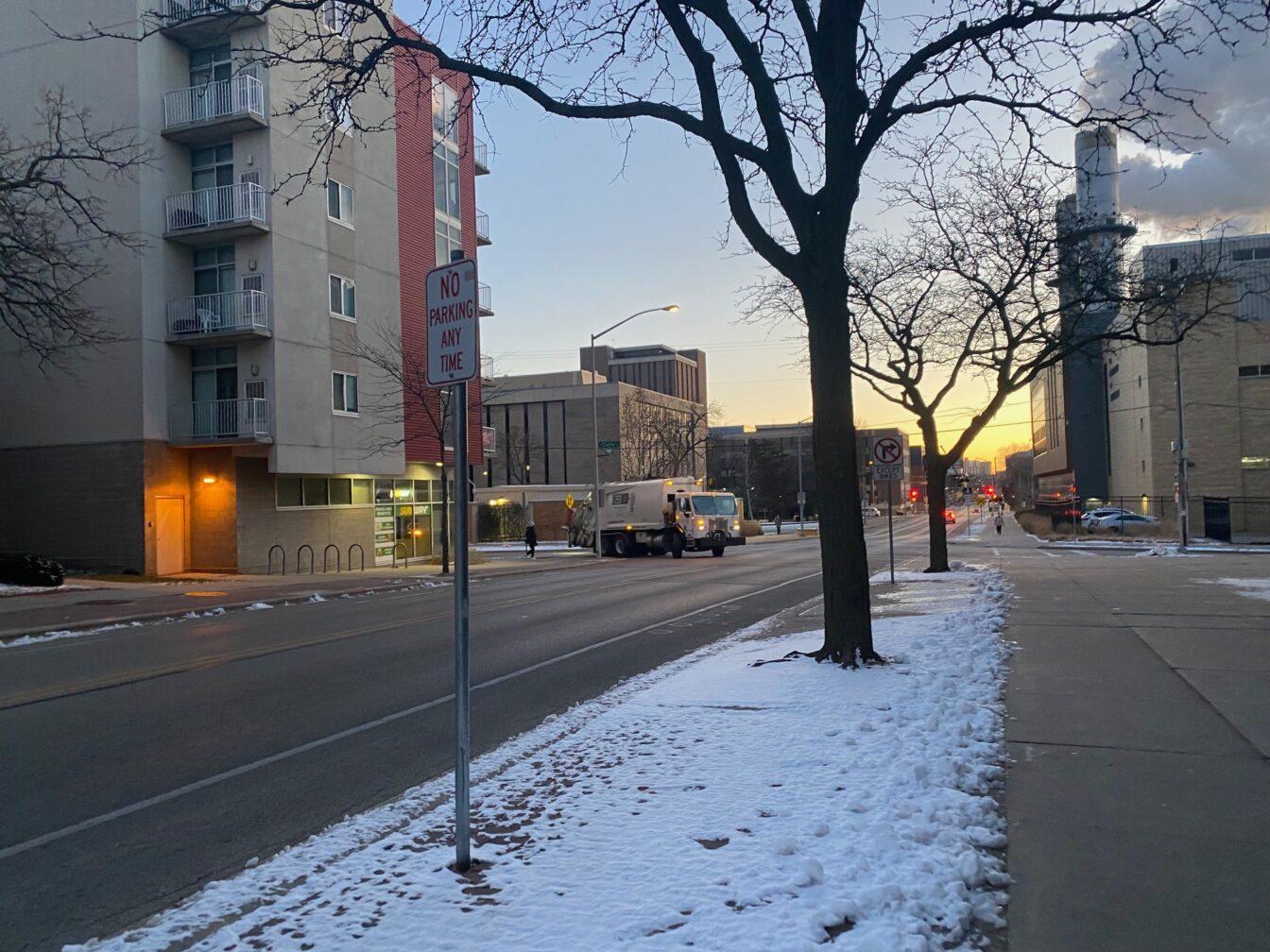The City of Madison Streets Division has reduced the salt routes by 6%, resulting in about 50 miles of roads being cut from the route, according to City of Madison spokesperson Bryan Johnson.
The restructure of the salt routes comes as a result of the Metro Transit route changes that happened over the summer, Johnson said. The roads not included in the salt routes will still receive plow service when there is over three inches of snow accumulated, Johnson said.
When looking at the map created by the Streets Division, there are a lot of gaps when it comes to the University of Wisconsin campus because UW is responsible for the snow removal and salting in these areas, Johnson said.
UW Transportation Services and Physical Plant of Facilities Planning and Management work together to keep roads and sidewalks on campus as clear as possible during the winter, according to the Transportation Services website.
Facilities Planning and Management perform most of the salting duties at UW, but other parts of campus, including UW Housing, Athletics, RecWell and the Wisconsin Union also participate in snow removal, Division of Facilities and Planning Management Marketing and Communications Director Lori Wilson said in an email to The Badger Herald.
Despite the changes, students should not experience many disruptions, because if the neighborhoods or roads around their homes are affected, it is only three to five blocks to the nearest salt route road, Johnson said.
A priority for Facilities Planning and Management is reducing salt use, as both UW and the City of Madison are aware of the harm that salt runoff causes to the nearby bodies of water, according to Johnson and the Outdoor Salt Use policy.
The UW’s Office of Sustainability is also working on a program currently called Salt Wise, in conjunction with Wisconsin Salt Wise, according to Wilson. This program aims to coordinate with campus departments, manage a website for transparency and share performance data annually.
The changes shouldn’t affect most people, even those who commute to campus, because the changes are so small, Johnson said.
“Close to campus … some of the changes are a block here or a block here that might be different than what it was years past,” Johnson said. “We made a map, specifically comparing the areas that were removed this year to last year.”
The map is currently a PDF linked on the City of Madison Winter website, which you have to zoom in and out of and does not have a comprehensive look at what is covered by services other than the city, Johnson said. The division is currently working to create a more comprehensive and interactive map that is user-friendly, Johnson said.



